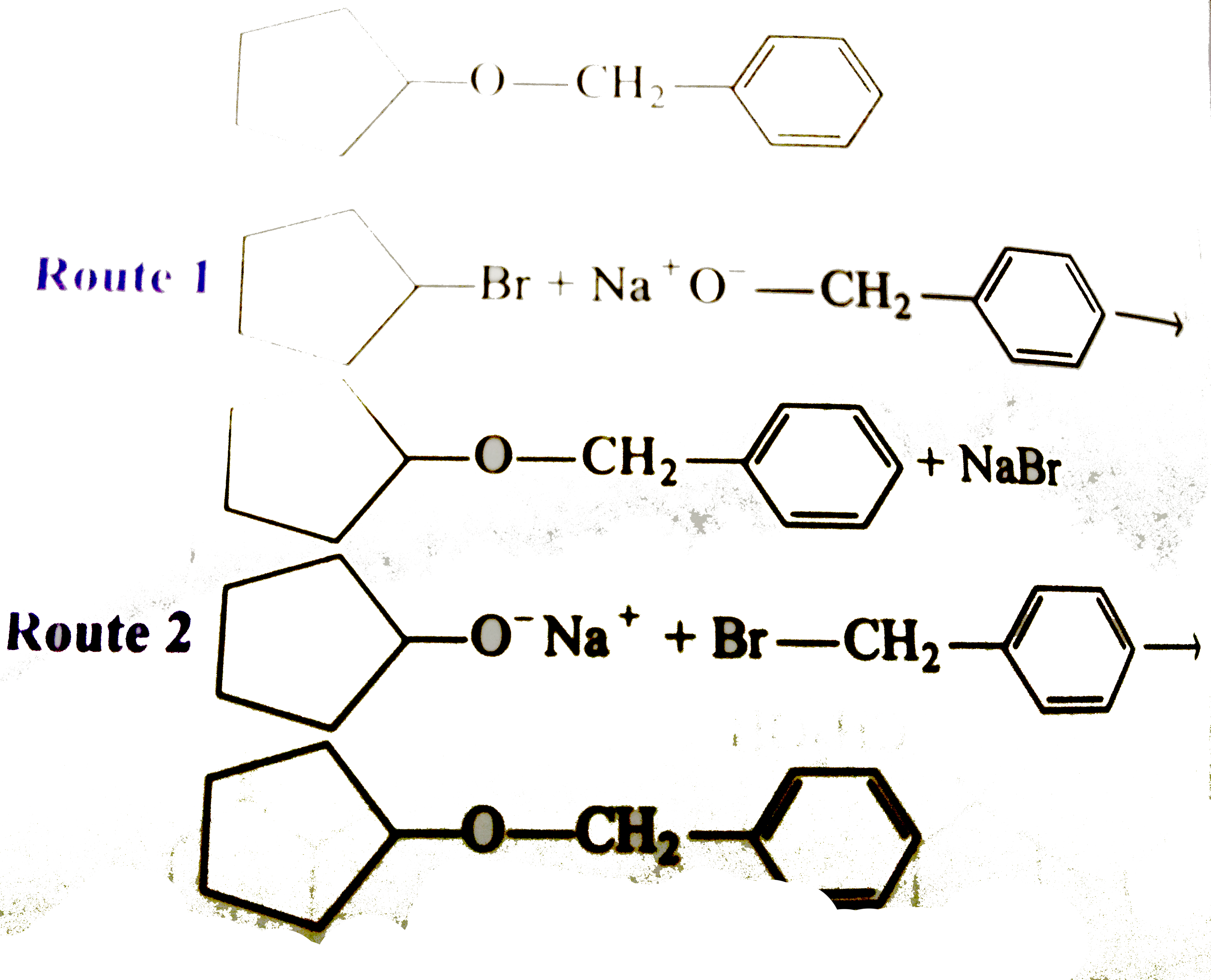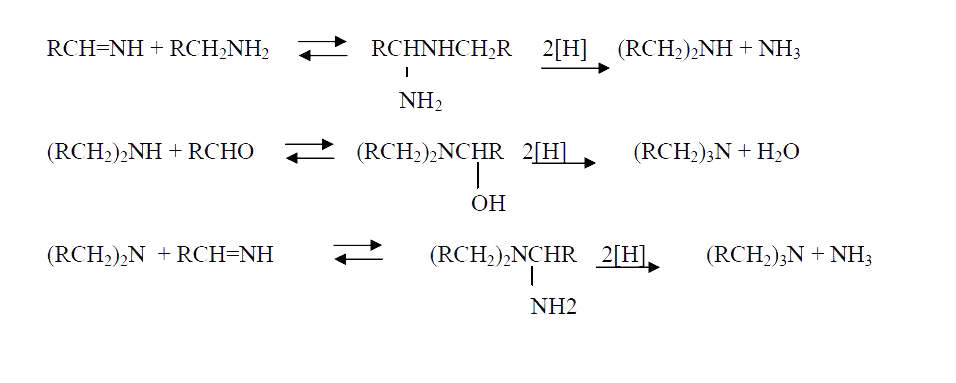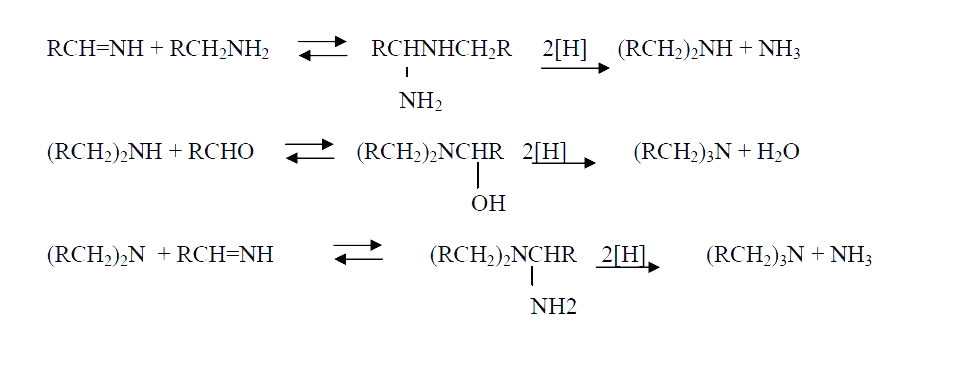Because it is cheap (a byproduct of the Solvay process) and deliquescent, anhydrous CaCI2 is often used to dry gases and organic liquids. However, it cannot be used to dry ammonia and ethanol since it forms complexes having the respective formulas
CaCI2.8NH3andCaCI2.4C2H5OH
CaCI2.4NH3andCaCI2.4C2H5OH
CaCI2.8NH3andCaCI2.8C2H5OH
CaCI2.4NH3andCaCI2.8C2H5OH
The correct Answer is:A
The additive compound with C2H5OH is called alcoholate.
Topper's Solved these Questions
- BOOK - R SHARMACHAPTER - THE S BLOCK ELEMENTSEXERCISE - Follow-up Test 1132videos
THE S BLOCK ELEMENTS
- BOOK - R SHARMACHAPTER - THE S BLOCK ELEMENTSEXERCISE - Question Bank (Level- I)4videos
THE S BLOCK ELEMENTS
- BOOK - R SHARMACHAPTER - THE S BLOCK ELEMENTSEXERCISE - Follow-up Test 917videos
THE S BLOCK ELEMENTS
- BOOK - R SHARMACHAPTER - THE P BLOCK ELEMENTSEXERCISE - Archives40videos
THE P BLOCK ELEMENTS
- BOOK - R SHARMACHAPTER - THERMODYNAMICSEXERCISE - Archives59videos
THERMODYNAMICS
Similar Questions
Give reasons for the following :
(i) Molecular mass of ethanol and dimethyl ether is the same, however ethanol is a liquid at room temperature but dimethyl ether is a gas.
(ii) Anhydrous CaCl2 cannot be used for drying ethanol
(iii) tertiary Alcohols form the turbidity fastest in Lucas test while primary alcohols form slowest.
(iv) Ethyl alcohol reacts with HI but not with HCN.
(v) Sodium metal can be used for drying diethyl ether but not ethanol.
(vi) Propanol, unlike propane is soluble in water.
(vii) Propanol boils at a higher temperature than propane.
(viii) Why glycerol has high viscosity and is miscible with water in all proportions ?
(ix) Reactivity of HX with alcohols is in the order, HI>HBr>CHl>HF
(x) Why is it not posssible to obtain a halide by reacting ROH with X− ?
(xi) ClCH2CH2OH is stronger acid than CH3CH2OH.
(xii) Hydration of 3-phenylbut-1-ene in dil. H2SO4 forms 2-phenylbutan-2-ol instead of 3-phenylbutan-2-ol.
(xiii) The compound (CH(3))2C−CH(OH)CH3 on treatment with conc. HCl forms (CH3)2C(Cl)−CH(CH3)2 instead of (CH3)3C−CH(Cl)CH3
(xiv) Acid catalysed dehydration of t-butanol is faster than that of n-butanol.
(xv) When t-butanol and n-butanol are separately treated with a few drops of dilute KMnO4, in one case only, the purple colour disappears and a brown precipitate is formed. Which of the two alcohols gives the above reaction and what is brown precipitate ?View SolutionAlexander Williamson prepared diethyl by a simple method, now called as Williamson's ether synthesis . In this method, an alkyl halide is treated with sodium alkoxide prepared from sodium and alcohol.

This reaction is used in the synthesis of symmetrical and unsymmetrical ethers.
It may be noted taht for preparing unsymmetrical ethers, the halide used should preferably be primary because secondary and tertiary alkyl halides may form alkenes as major product due to elimination process.
CH3−CH3∣C∣CH3−Br+Na+O−−C2H5Sodium ethoxide→CH3−CH3∣C=CH22-methylpropene+C2H5OH+NaBr
Aryl ethers or phenolic ethers can be prepared by using sodium phenoxide and alkyl halides. However, aryl halides and sodium alkoxide cannot be used for preparing phenolic ethers because aryl halides are less reactive towards nucleophilic substitution reaction
There are two possibilities for the synethesis of following ether :

Which of the following is correct ?View Solution
Knowledge Check
- Question 1 - Select One
Anhydrous CaCI2 is used as drying agent, because it:
Aadsorbs water moleculeBabsorbs water moleculeCboth absorbs and absorbs water moleculeDnone of the above - Question 2 - Select One
Alexander Williamson prepared diethyl by a simple method, now called as Williamson's ether synthesis . In this method, an alkyl halide is treated with sodium alkoxide prepared from sodium and alcohol.

This reaction is used in the synthesis of symmetrical and unsymmetrical ethers.
It may be noted taht for preparing unsymmetrical ethers, the halide used should preferably be primary because secondary and tertiary alkyl halides may form alkenes as major product due to elimination process.
CH3−CH3∣C∣CH3−Br+Na+O−−C2H5Sodium ethoxide→CH3−CH3∣C=CH22-methylpropene+C2H5OH+NaBr
Aryl ethers or phenolic ethers can be prepared by using sodium phenoxide and alkyl halides. However, aryl halides and sodium alkoxide cannot be used for preparing phenolic ethers because aryl halides are less reactive towards nucleophilic substitution reaction
Methyl tertiary butyl ether (MTBE) is added in gasoline to improve its octane number .
CH3−CH3∣C∣CH3−O−CH3
Which of the following is the best method for synthesis of the above ether ?A(Ch3)2C=CH2+CH3OHH2SO4−−−→B(CH3)3CBr+CH3ONa→C(CH3)3C−O−Na+CH3I→DAll of these reactions - Question 3 - Select One
Alexander Williamson prepared diethyl by a simple method, now called as Williamson's ether synthesis . In this method, an alkyl halide is treated with sodium alkoxide prepared from sodium and alcohol.

This reaction is used in the synthesis of symmetrical and unsymmetrical ethers.
It may be noted taht for preparing unsymmetrical ethers, the halide used should preferably be primary because secondary and tertiary alkyl halides may form alkenes as major product due to elimination process.
CH3−CH3∣C∣CH3−Br+Na+O−−C2H5Sodium ethoxide→CH3−CH3∣C=CH22-methylpropene+C2H5OH+NaBr
Aryl ethers or phenolic ethers can be prepared by using sodium phenoxide and alkyl halides. However, aryl halides and sodium alkoxide cannot be used for preparing phenolic ethers because aryl halides are less reactive towards nucleophilic substitution reaction
To which of the following mechanisms does the reaction ( Williamson's ether synthesis ) belong ?ASN1BSN2CE1DE2
Alexander Williamson prepared diethyl by a simple method, now called as Williamson's ether synthesis . In this method, an alkyl halide is treated with sodium alkoxide prepared from sodium and alcohol.

This reaction is used in the synthesis of symmetrical and unsymmetrical ethers.
It may be noted taht for preparing unsymmetrical ethers, the halide used should preferably be primary because secondary and tertiary alkyl halides may form alkenes as major product due to elimination process.
CH3−CH3∣C∣CH3−Br+Na+O−−C2H5Sodium ethoxide→CH3−CH3∣C=CH22-methylpropene+C2H5OH+NaBr
Aryl ethers or phenolic ethers can be prepared by using sodium phenoxide and alkyl halides. However, aryl halides and sodium alkoxide cannot be used for preparing phenolic ethers because aryl halides are less reactive towards nucleophilic substitution reaction
Select the correct reaction (s) among the following reactions :View SolutionRead the passage given below and answer the following questions:
Reductive alkylation is the term applied to the process of introducing alkyl groups into ammonia or a primary or secondary amine by means of an aldehyde or ketone in the presence of a reducing agent. The present discussion is limited to those reductive alkylations in which the reducing agent is hydrogen and a catalyst or "nascent" hydrogen, usually from a metalacid combination, most of these reductive alkylations have been carried out with hydrogen and a catalyst. The principal variation excluded is that in which the reducing agent is formic acid or one of its derivatives, this modification is known as the Leuckart reaction. The process of reductive alkylation of ammonia consists in the addition of ammonia to a carbonyl compound and reduction of the addition compound or its dehydration product. The reaction usually is carried out in ethanol solution when the reduction is to be effected catalytically

Since the primary amine is formed in the presence of the aldehyde it may react in the same way as ammonia, yielding an addition compound, a Schiff's base (RCH=NCH2R) and finally, a secondary amine. Similarly, the primary amine may react with the imine, forming an addition product which also is reduced to a secondary amine Finally, the secondary amine may react with either the aldehyde or the imine to give products which are reduced to tertiary amines.

Similar reactions may occur when the carbonyl compound employed is a ketone.
(source: Emerson, W. S. (2011). The Preparation of Amines by Reductive Alkylation. Organic Reactions, 174–255. doi:10.1002/0471264180.or004.03 )
Acetaldehyde is reacted with ammonia followed by reduction in presence of hydrogen as a catalyst. The primary amine so formed further reacts with acetaldehyde. The Schiff’s base formed during the reaction is:View SolutionRead the passage given below and answer the following questions:
Reductive alkylation is the term applied to the process of introducing alkyl groups into ammonia or a primary or secondary amine by means of an aldehyde or ketone in the presence of a reducing agent. The present discussion is limited to those reductive alkylations in which the reducing agent is hydrogen and a catalyst or "nascent" hydrogen, usually from a metalacid combination, most of these reductive alkylations have been carried out with hydrogen and a catalyst. The principal variation excluded is that in which the reducing agent is formic acid or one of its derivatives, this modification is known as the Leuckart reaction. The process of reductive alkylation of ammonia consists in the addition of ammonia to a carbonyl compound and reduction of the addition compound or its dehydration product. The reaction usually is carried out in ethanol solution when the reduction is to be effected catalytically

Since the primary amine is formed in the presence of the aldehyde it may react in the same way as ammonia, yielding an addition compound, a Schiff's base (RCH=NCH2R) and finally, a secondary amine. Similarly, the primary amine may react with the imine, forming an addition product which also is reduced to a secondary amine Finally, the secondary amine may react with either the aldehyde or the imine to give products which are reduced to tertiary amines.

Similar reactions may occur when the carbonyl compound employed is a ketone.
(source: Emerson, W. S. (2011). The Preparation of Amines by Reductive Alkylation. Organic Reactions, 174–255. doi:10.1002/0471264180.or004.03 )
Ethanal on reaction with ammonia forms an imine (X) which on reaction with nascent hydrogen gives (Y). Identify ‘X’ and ‘Y’.View SolutionRead the passage given below and answer the following questions:
Reductive alkylation is the term applied to the process of introducing alkyl groups into ammonia or a primary or secondary amine by means of an aldehyde or ketone in the presence of a reducing agent. The present discussion is limited to those reductive alkylations in which the reducing agent is hydrogen and a catalyst or "nascent" hydrogen, usually from a metalacid combination, most of these reductive alkylations have been carried out with hydrogen and a catalyst. The principal variation excluded is that in which the reducing agent is formic acid or one of its derivatives, this modification is known as the Leuckart reaction. The process of reductive alkylation of ammonia consists in the addition of ammonia to a carbonyl compound and reduction of the addition compound or its dehydration product. The reaction usually is carried out in ethanol solution when the reduction is to be effected catalytically

Since the primary amine is formed in the presence of the aldehyde it may react in the same way as ammonia, yielding an addition compound, a Schiff's base (RCH=NCH2R) and finally, a secondary amine. Similarly, the primary amine may react with the imine, forming an addition product which also is reduced to a secondary amine Finally, the secondary amine may react with either the aldehyde or the imine to give products which are reduced to tertiary amines.

Similar reactions may occur when the carbonyl compound employed is a ketone.
(source: Emerson, W. S. (2011). The Preparation of Amines by Reductive Alkylation. Organic Reactions, 174–255. doi:10.1002/0471264180.or004.03 )
(CH3CH2CH2)2NH+CH3CH2CHO→P2[H]−−→Q
The ompound Q is :View SolutionRead the passage given below and answer the following questions:
Reductive alkylation is the term applied to the process of introducing alkyl groups into ammonia or a primary or secondary amine by means of an aldehyde or ketone in the presence of a reducing agent. The present discussion is limited to those reductive alkylations in which the reducing agent is hydrogen and a catalyst or "nascent" hydrogen, usually from a metalacid combination, most of these reductive alkylations have been carried out with hydrogen and a catalyst. The principal variation excluded is that in which the reducing agent is formic acid or one of its derivatives, this modification is known as the Leuckart reaction. The process of reductive alkylation of ammonia consists in the addition of ammonia to a carbonyl compound and reduction of the addition compound or its dehydration product. The reaction usually is carried out in ethanol solution when the reduction is to be effected catalytically

Since the primary amine is formed in the presence of the aldehyde it may react in the same way as ammonia, yielding an addition compound, a Schiff's base (RCH=NCH2R) and finally, a secondary amine. Similarly, the primary amine may react with the imine, forming an addition product which also is reduced to a secondary amine Finally, the secondary amine may react with either the aldehyde or the imine to give products which are reduced to tertiary amines.

Similar reactions may occur when the carbonyl compound employed is a ketone.
(source: Emerson, W. S. (2011). The Preparation of Amines by Reductive Alkylation. Organic Reactions, 174–255. doi:10.1002/0471264180.or004.03 )
Reductive alkylation of ammonia by means of an aldehyde in presence of hydrogen as reducing agents results in formation of:View Solution

